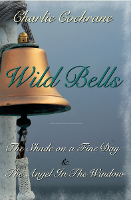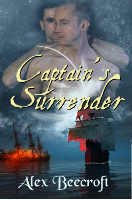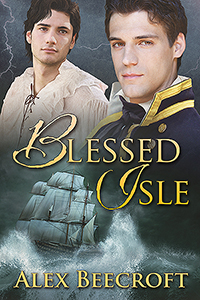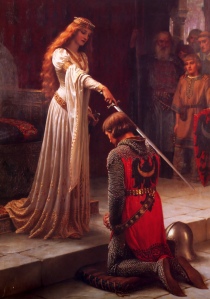The perils of a historical novelist, part two: Romance versus Research

This struck me as a necessary follow on to my post about research (The perils of a historical novelist, part one). I’d like to think that we’re agreed that research is good; that it’s always preferable that an author pays attention to real history and doesn’t just make things up, and that real history is more interesting than fake history any time.
As writers of historical fiction, we don’t want our characters to be modern people playing dress up, let alone modern people playing dress up in badly made polyester capes and sneakers. No doubt there are readers with such powerful imaginations that they can conjure up a dazzling scene of elegance and glory from a selection of cliché characters wearing bad live-role-playing costumes but, alas, for the rest of us something more is needed. And that leads right back to the importance of researching both the big trends and the small details of your setting.
However, after you’ve done your research and accumulated these details, that, unfortunately, is not the end of it. Once your head is stuffed with facts and your computer is bristling with bookmarked sites about the correct boning of a corset and the height of that season’s shoes, and your bookshelves are groaning with scholarly tomes on social mores and miscellanea, that’s only where you start.
Can you ever have too much research?
The short answer to this is ‘yes and no.’ I’m not sure that you as an author can ever do too much research, but not all of your research needs to find its way into your book.
And he who strives the tempest to disarm
Will never first embrail the lee yardarm.
For example, you may have spent hours pouring over sailing instructions, figuring out exactly how your ailing, scurvy-wrecked crew would take in the sails in a storm. But now that you know, you also need to consider the enjoyment of your readers.
How many readers are likely to be engrossed in a storm scene—to feel the howling of the wind, the surging of the seas that sweep across the deck in unbroken sheets of freezing water, while the men cling with all their strength to the rigging and the sails whip-crack through the air—if your characters are spending pages and pages of dialogue in an argument over whether to take in the lee or weather clew first, or let go the tack and risk the sails blowing through the buntlines?*
You may want to get this information into the book because dammit, you did all this work! You can’t help feeling that it would be nice if everyone knew the kind of lengths to which you had gone to get your facts right. In the same vein you may be tempted to stop the action every so often to explain the history behind the Boxer Revolution, Harold Godwinson’s trouble with his brothers, the careful fashioning of the staves in the barrels used for the Gunpowder plot etc etc. But this is a temptation you have to rein in hard.
Heavy handedly shoehorning in your research, where it isn’t necessary for the story, is almost as bad as not doing the research in the first place. Firstly because you will bore the socks off your poor readers, and secondly because—paradoxically enough—drawing attention to your historical facts will actually make your book seem less authentic.
What? It’s sort of like homeopathy – the research isn’t there any more but you can still reap the benefits?
Well, in a way, yes. I know I’ve said ‘study everything; nothing is too small to be just the right detail to establish the background’, and that’s true. The art here is to introduce enough small details to convince your reader that you know loads, without randomly spraying around information which isn’t relevant to the story. We want enough history to firmly set the story and reader in a different time, without making the novel read like a textbook.
There are all kinds of tricks as to how to do this, but probably the easiest is to remember that none of these little details are unusual for your characters. Their surroundings are normal life to them. Explanations of things, drawing attention to things because they’re historically accurate, are actually going to give less of an impression of verisimilitude than merely treating them as unremarkable facts.
For example, rather than saying ‘when cut steel buckles were introduced in (whenever) they had proved very popular with officers who couldn’t afford silver,’ which is an awkward info-dump and tosses you straight out of your immersion in the story, just say ‘the cut steel buckle glittered as he hurled his shoe across the room.’ It doesn’t get in all the facts, but it adds just that tiny pinch of historical detail to keep the reader rooted in the era, and it does it without slowing up the action.



Weevils are a good example of this. I was watching both the Hornblower TV movies and the film of ‘Master and Commander’ over the past month, and their treatment of weevils (a kind of flour grub/beetle which regularly infested the bread aboard ship) seemed to me a very clear lesson in how to do it well, and how to do it very badly indeed.
The Hornblower series had Pellew sitting at his desk eating a piece of hard tack which was covered in white maggots. The camera zoomed in on the maggots and you saw him tapping them off onto the table while he and Hornblower grimaced in a sort of ‘ew, the things we have to put up with!’ way.
The equivalent scene in Master and Commander; everyone’s eating, chatting, Jack indicates a couple of weevils that have fallen out of the hard tack on Stephen’s plate and sets him up so that Jack can make a joke about ‘the lesser of two weevils.’ Stephen rolls his eyes at Jack’s attempt at witticism and everyone laughs.
The Hornblower one is bad because Pellew and Hornblower have grown up in the Navy. It’s out of character and out of period for either of them to even notice the weevils unless the biscuit is so infested that it’s fallen to dust. This ‘OMG! Disgusting creepy crawlies on the food! Ew! That’s horrible!’ scene is entirely set up for the modern viewer, not for the benefit of the characters themselves. It’s the movie equivalent of an author writing ‘because of the poor methods of preservation in the 18th Century, even the dried bread on board ship was attacked by a variety of pests such as weevils and bargemen. My hero, because he is really far more sensitive and advanced than anyone else in his century, thought that this was disgusting.’
(It’s also bad because those are obviously bargemen, not weevils – but that’s another story: http://www.hms.org.uk/nelsonsnavymaggot.htm )
The Master and Commander one is good because it achieves the same thing – informs the watcher that ships biscuit often came with added weevils – but it does so without fanfares. It does so without a neon sign going ‘oh, look, fascinating historical fact here!’ It gets the information across without making the characters act out of character. Not one of them, for example, is surprised or disgusted to find a weevil on the plate. That in itself is a glimpse into a different world, a different attitude than our own.
But it also combines this with a bit of deft characterization of Jack as a man who is overwhelmed with joy at his own cleverness in being able to make a rather simple joke. And it does this inside a scene which is also making a point about conviviality, the irrepressibility of the human spirit, the tendency of the navy to be drunk in charge of large warships and the fact that this would be a life it would be possible for a person to live and love not merely to endure.
One rather lengthy diversion later, and I try to sum up by saying that part of writing historicals is maintaining that balance whereby you can manage to tell the modern reader what they need to know without info-dumping or violating the characterization or historical integrity of your characters. If your research is visible, calling attention to itself, it’s probably doing more harm than good.
In this way we can also solve the perennial problem of ‘oh, but they must have had terrible hygiene/smelled/been infested with parasites etc. Do I say so, or do I pretend otherwise?’
In fact there is no need to talk about whether your characters smell or not, because everyone would have smelled. It would have been normal for them and they would not, therefore, have even noticed it. A man who washed every week, changed his shirt every day and wore pomade and cologne would have been, by the standards of his day, a paragon of cleanliness. It’s more authentic, then, to treat him as such.
Just as most people nowadays don’t notice their bed-mites until they cause a problem, why would your historical characters need to notice their parasites unless they caused a problem? By all means if you’re going to have an outbreak of the Black Death in chapter 9, mention the troublesomeness of the characters’ fleas in chapter 3, but otherwise, if they’re not pertinent to the plot, your characters are probably not going to be noticing them. You can put them in if you want, or leave them out if you want, depending on what you are trying to achieve.

I personally like to include a bit of filth where it’s appropriate – walk on parts for people with visible syphilis, people who have lost limbs, people who have lost teeth to scurvy or bad dentistry, etc – because it is part of the flavor of my setting. I like the great big, lively, unwashed, squalid sprawl of Hogarth’s gin lane, through which gentlemen in lace and peacock silk hurry with one hand on their sword hilt and the other on their purse. But if you really can’t bear the thought of a hero who doesn’t wash every day, you can always either make his mania for cleanliness a character trait, or set your story in a setting where they were big on bathing – like the Romans.
What if it’s not just washing, though? What if it’s something worse?
To me, the cleanliness problem seems quite a minor example of a more far reaching problem caused by trying to be realistic in your romance. It isn’t only in matters of washing that the past sometimes causes a modern reader to go ‘oh, that’s just wrong!’ Sometimes it’s a more moral issue.
Suppose we’re writing a book set in the Viking age, in which a Viking warrior falls in love with the Irish warrior he captured in a raid on the town that will at some point in the future become Dublin. It sounds great, until research indicates that the standard Viking tactic for dealing with defeated warriors was to rape them in order to humiliate them and break their spirit. Do we allow our hero to be authentic – and a rapist – which, in my opinion, and I believe that of many modern readers, is not a good start for a happy ever after? Or do we somehow fudge the issue?
And once we have fudged that issue, how do we deal with the problem that the Vikings (like the Ancient Greeks and Romans) considered it shameful to be the bottom in a m/m relationship? It’s probably not a problem if you’re writing yaoi or d/s, but if you’re attempting to show a reciprocal relationship of equals then I’m sorry, sir, but he really won’t respect you in the morning.
What about slavery? I’m sure that in the 18th Century there were people who honestly and sincerely believed that slavery was ordained by God, as a method of civilizing savages, saving them from damnation and introducing them to the possibility of education. Allowing them to better themselves. Why it was practically an act of generosity!
But will any modern reader be able to accept a hero who believes such a thing?
As a writer there is a big temptation to say ‘well, I’m going to go with what was historically realistic at the time.’ After all, you’ve done the research and you understand how all these attitudes looked to the people of the time. And you care about being authentic. It’s important to your professional pride.
However, I do personally think that this is another place where a balancing act is required. Ignoring the historical attitude and making everyone behave like moderns in frock coats results in plastic history and a story that is just not believable. But lobbing in the historical attitude wholesale results in a story where everyone hates your hero and wants him to die. Neither of these are good things 😉
For example, in Captain’s Surrender, when Peter was finally forced into a position where he couldn’t avoid thinking about what he and Josh were up to, his reaction was to seriously consider turning his lover in to be hanged. He hadn’t had time to think through the implications – he went with the reaction society had instilled in him. And this example of him being a morally upstanding citizen (by the standards of his time) rightly made many people dislike him. Equally, Adam Robinson’s refusal to allow Emily to support them both with her money made him seem – to a modern reader – pig headed, chauvinistic, stupid, whereas at the time it would have been proof of his good character and honorable intentions.
This is where you have to perform a delicate high wire act of getting enough of the historical attitude in to make your characters realistic by the standard of the times, but not so much that your modern readers will hate them.
Fortunately there are at least two good workarounds for this problem.
1. Make your character peculiar by the standards of the time. Patrick O’Brian’s Stephen Maturin is a good example of this. He’s a natural philosopher, and he has the most outrageously liberal opinions about just about everything. He can get away with this without appearing to be blatantly anachronistic, because the other characters make it quite clear that they are merely humoring the Doctor’s peculiar little ways. They like him, and they consider him a harmless weirdo.
Without the support system of all the other characters making it plain that Maturin’s attitudes are odd, (not to mention the places where he really is odd by anyone’s standards) he would come across as anachronistic. As it is, he comes across as charmingly eccentric and believable.
The disadvantage of this method is that you can’t use it for more than one or (at a pinch) two characters without undermining the believability of your whole world.
2. Make your character think through the issue. You want your Viking warrior to decide against raping his captive? Give him a father who was killed in his sleep by a vengeful slave-girl, years after he thought all the resistance was kicked out of her. Help him to connect the dots. It may be that getting him to the point where he realizes that he can’t force his captive to love him takes up half of the plot. That’s great! It means you’ve got a plot that arises out of an authentic historic situation and character. And then you can tackle the whole ‘well I’m not going on the bottom’ thing for the second half!
Both 1 and 2 are very plot and characterization intensive. But that’s OK because the issue of the characters’ historical attitudes is not one you can sweep under the carpet without sweeping away much of your realism as well.

So there you go. In the Realism v Romance stakes, my position is that you need to thoroughly know what would be realistic. You need to have done the research and faced the occasional place where history is just plain nasty. And then you have to somehow take that history and make it entertaining and romantic. There are things you can fudge, things you can overlook because the characters themselves would not notice them, and things you have to work through to come to a compromise which will appeal to your historical purist and your romantic softie equally. But that’s half the fun of the thing!
Alex
*(Example frivolously borrowed from Falconer’s poem ‘The Shipwreck’ via ‘Seamanship in the Age of Sail’ by John Harland.)
More from Alex on her website









































